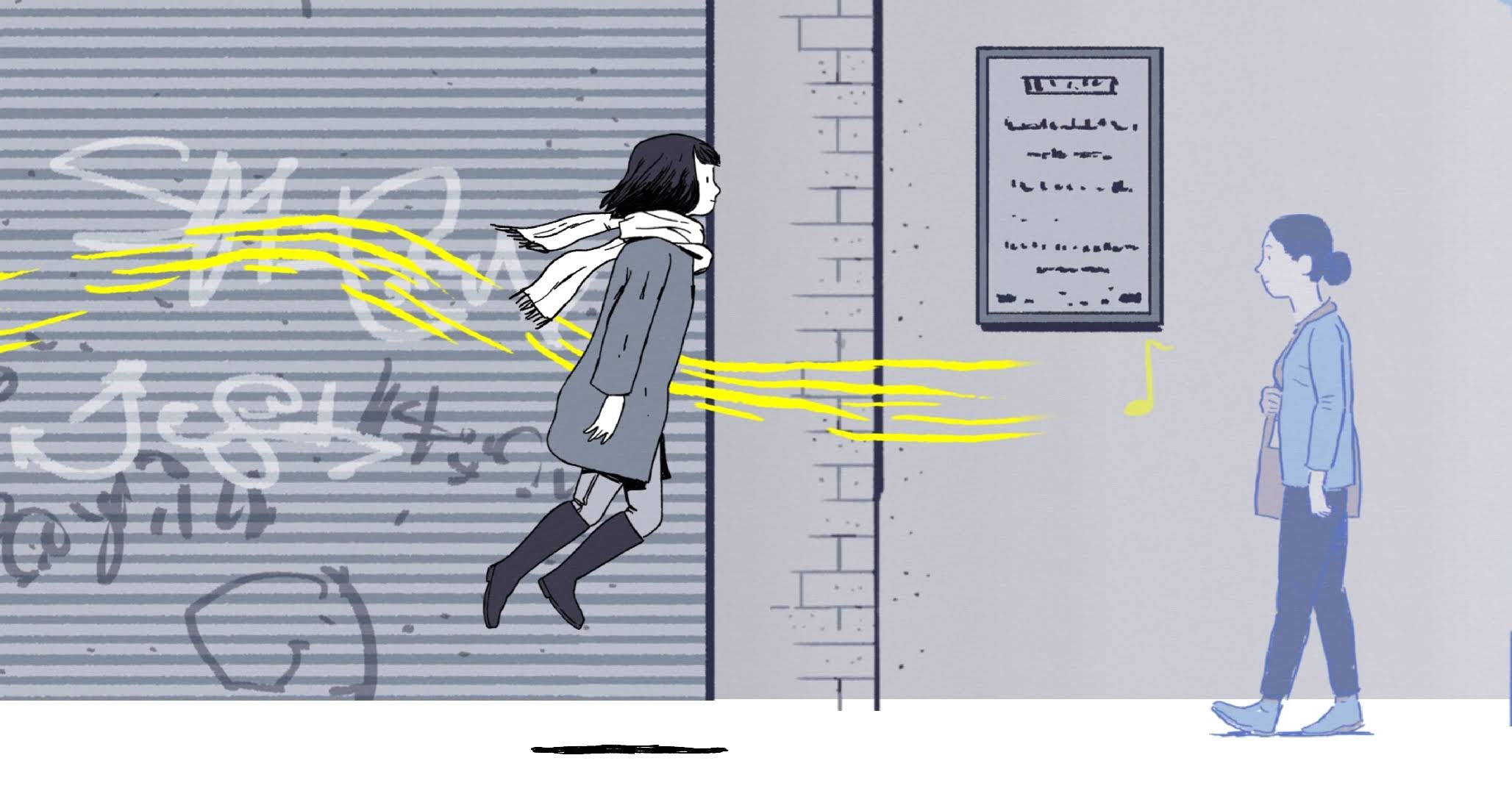Florence is entirely predicated on intimacy as a social bond. It is a mobile game for the mobile addict, transforming the isolated technological confines of a phone into a conduit for a compassionate tale of longing — even suggesting headphones for the best experience, to both draw us in to the developers wonderfully crafted world and out of our own.
The game is rooted within an understanding of the modern human dependency on technology. It relies only on images to relay its sequence of events, a wordless venture during which a relationship is founded and illustrated through implied human connection. And the game is nothing short of a masterpiece in pacing and visual storytelling.
In order to tell its rather simplistic narrative, Florence is built around many basic prompts which the player is likely familiarized with on a daily basis in real Life. It recontextualizes finger swipes and retweets into a more connected relationship outside the boundaries of a smartphone screen, metaphorically suggesting the ironic nature regarding isolationism within internet culture.
Connected and Alone

The pictures Florence likes and swipes through suggest close friends that have drifted far away, now living unknown lives, sharing their most exciting moments for others to observe and long for themselves. Through the worldwide web, we have never been more connected to each other, nor more disconnected.
The subject of physical being is constantly quarreled with, ripped apart, and dissected for analysis throughout the entirety of Florence. It is Cronenberg’s eXistenZ, but made for romantics instead of kinks. ‘Stuff’ invades the homes of our star-crossed lovers, and the moment the player is asked to pick through it all, the game becomes a self-expressive meditation on dependency.
A commercialized world where humanity’s obsession with ‘success’ often culminates in treating social media as a pundit for self-eminence. The developers at Mountains understand that Twitter is a game, that Instagram is a slot machine, that each outlet is designed for individuals to obsess over in the everlasting search for an ideal persona to relay.
The titular protagonist is no stranger to this obsessive lifestyle; but the second her phone battery fades away, a lovely wave of strings peaks her interest and literally carries her towards its maker. Kevin Penkin’s compositions consistently apply meditative reminiscence to each scene, suggesting permanence to every scenario without succumbing to narrative deadweight.
Florence suggests that all of those likes and retweets a modern citizen promotes inherently conjure a notion of connectivity, of compassion and inspiration, of reaching out and grabbing hold. But artistic vision and romantic connectivity help to alleviate the self-obsessed social media bubble trapping us inside. In other words, using those connective platforms to the most fulfilling extent.




Nothing Short of Revolutionary
The way in which Florence contextualizes the player’s fingertaps into thematically-significant orchestrations is nothing short of revolutionary. Text bubbles become puzzles to solve, describing thoughtful dialogue. Their round shapes at first imply wholesome bonding; while jagged edges later result in arguments, ultimately leaving the two central characters as mere black and white sketches.
The manner of scrolling through Florence’s memories literalizes the notion that perusing one’s photo gallery is equivalent to strolling down memory lane. These are images enveloped in nostalgic significance, developing the individual’s character even now upon recollection.
Color is of utmost importance to the storytelling methods in Florence. The cool, complementary blues and yellows help to define both Florence and Krish, respectively as individuals appropriately commingling. Like a wonderful painting expressing mutual yearning.
The tenth chapter, “Moving In,” suggests a melding of the minds, asking players to compromise with themselves on what to allow room for in their newly shared home. A piano melody plays alongside a cello during Chapter 11’s scenes of romantic bonding, emphasizing a strengthening of the central relationship through sound alone — as well as imagery and player interactivity dictating an element of happiness found in the mundane.

Like any great portrait, there are so many fine visual details strewn across Florence it would be impossible to name them all: the parallelisms suggesting both success and demise; the apathetic parental credence turned last resort; the winding clocks signifying the passage of time, as dictated by player control; brushing the screen to either paint or erase sentimental subjects. All of these moments carry forth the narrative in the most organic manner, abruptly dismayed only by the surprisingly disingenuous storybook construction, which sadly suggests a thorough arc and conclusion, ignoring the more human consequences of intimacy.
Florence is a pivotal mobile experience because of its frank and earnest intimacy. Its depiction of a love story-turned-tragedy remains hopeful in its finale, arguing the importance of every lived opportunity as a learning experience. As an inspiring segue into maturity. As a struggle to define one’s self. As a turning point, to finally wake up and brush the dust off of one’s suspended aspirations.



